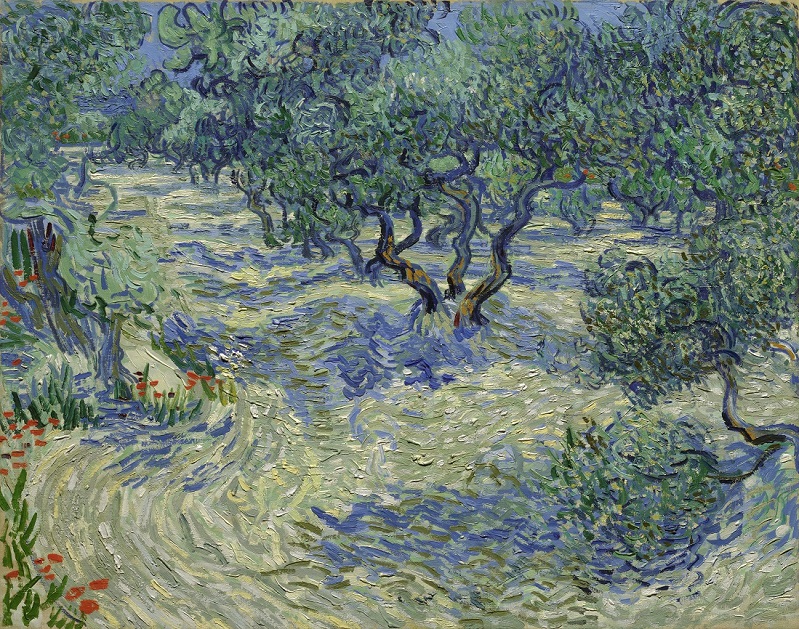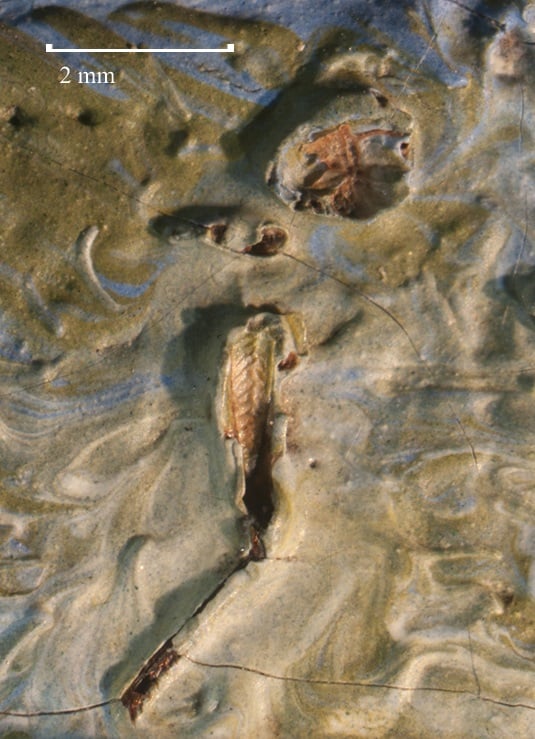Art World
A Very Fancy Grasshopper Was Found in the Paint of a Van Gogh Masterpiece
The discovery of the critter is a by-product of significant research underway at Nelson-Atkins Museum of Art.

The discovery of the critter is a by-product of significant research underway at Nelson-Atkins Museum of Art.

Kate Brown

This is not something researchers at museums see every day.
When curators at the Nelson-Atkins Museum of Art put the Vincent van Gogh 19th-century masterpiece Olive Trees under the microscope to better understand the Dutch painter’s artistic process, a little critter was found entombed within the thick oil paint.
The unusual discovery was unexpected but not that surprising. After all, Van Gogh is one of the world’s best known plein airs artists, and his famous landscapes were painted within the very fields and gardens that were his subject matter.
The microscopic insect cannot be seen with the naked eye, and so it remained unnoticed for over a century. It made for a particularly exciting find, as the museum’s team was hopeful that they could use it to determine the season in which the work was made. The museum contacted paleo-entomologist Dr. Michael S. Engel, senior curator and professor at the University of Kansas and associate at the American Museum of Natural History in New York, but unfortunately the grasshopper’s body could not confirm precise dating.

Image taken through a microscope captures the grasshopper embedded in the paint of Olive Trees.
Engel did observe however that the thorax and abdomen of the grasshopper were missing and that there was no sign of its movement once it landed in the paint, which indicates that the insect was already dead when it ended up on the canvas.
Van Gogh had written to his brother about the trials and tribulations of painting outdoors: “I must have picked up a good hundred flies and more off the four canvases that you’ll be getting, not to mention dust and sand.” Add grasshoppers to the list of natural elements that Van Gogh had to work against.
Though Van Gogh’s resident grasshopper has captured the imaginations of museum goers, it is only a diminutive by-product of significant research that is underway at the institution, in particular the in-depth studies of color shifts that have taken place in the artist’s work. It has been determined that Van Gogh painted with a red pigment that has receded over time, a finding that alters what is currently known about the work and its color relationships within the painting, but also to other works of this theme.
Curators, conservators and scientists are adding this to research on 104 French paintings and pastels within the collection of the museum.